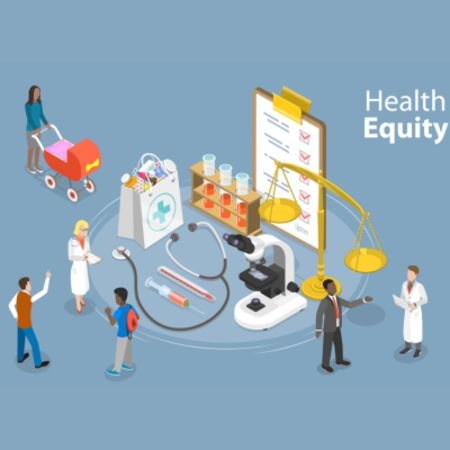#HIMSS23Europe hosted a panel discussion on how we can use technology to advance global health and deliver equitable healthcare.
The panel featured João Bocas, CEO of Digital Salutem, Abigail Norville, Deputy Secretary General of the Ministry of Health, Welfare and Sport NL, Clayton Hamilton, Regional Technical Officer of the World Health Organization Europe, Dr Ann Aerts, Head of the Novartis Foundation, and Dr Christoph Benn, Director for Global Health Diplomacy at the Joep Lange Institute.
So where do we stand in terms of health equity and what do we mean by that?
We always discuss health as a human right, and we advocate for health for all and universal health coverage as integral components of Sustainable Development Goals (SDGs). But we can also agree that what we mean is that we want to reduce the enormous disparities in health care: Regardless of where one lives, one should live a healthy and productive life, and have access to quality health services.
Digital transformation can play a significant role in addressing these challenges faced by the global economy and helping us get back on track.
We need to discuss how digital transformation can contribute to the economic recovery, health care and thus ensure healthier lives for people.
The WHO has been actively addressing health equity and has monitored the drivers of health care improvement for many years. Throughout its 75-year history, the WHO has also recognised the importance of understanding health inequities and working towards their reduction.
One significant factor contributing to these improvements is the implementation of social and economic policies by governments. These policies have played a vital role in enhancing living conditions, ensuring income security, improving access to healthcare, and promoting mental health and well-being.
However, we must not forget the important role of health care information. Health care information is really a huge enabler of health equity. The improvement in country health information systems is contributing directly to the increase in life expectancy.
The digitalisation of health information is a huge improvement in allowing us to manage health (in)equities, to understand their origin and their drivers, and to understand how to form policies to promote and mitigate them.
Access to health care is estimated to account for 20% of a population’s health. The other 80% is determined by the pre-existing conditions as to where you are born, where you grow up, you age etc.
We must challenge that reality, and we can use the power of data and AI to do this and really understand the true drivers of health inequity. We must combine the data from the health sector with the data from the health influencing sectors such as housing, education, income, etc. All these factors can have an influence on our health. We need to bring this data together and let the machines inform us what is the best or the worst combination for our health outcomes.
Digital Health and AI thus carry a lot of possibilities to transform the way we deliver health and care.
While telehealth has shown significant potential during the COVID-19 pandemic, it is crucial to address the disparities that may arise from its implementation. One of the key considerations is bridging the digital divide. Access to reliable internet connectivity, digital devices, and technology literacy can be barriers for certain populations.
In a recent scoping review conducted by WHO for the 53 countries in the region, in collaboration with Professor DAVIES from Public Health Wales, it was discovered that while we maintain hope in the transformative power of technology, the reality is that the most vulnerable individuals in society have the least access and opportunities to use digital technologies that could be of benefit.
We are in a situation where having the skills, access, means, and financial resources to utilise technology determines whether one belongs to a privileged or disadvantaged group. This is not a situation we should accept. We should not solely consider technology as the driving force. We must examine the entire social spectrum that contributes to health (in)equity and recognise the role that digital tools can play in mitigating it.
There are three aspects to consider.
Firstly, it requires creating the right environment for technology implementation, which includes addressing regulatory and legislative factors.
Secondly, it is not just about having the latest gadgets and tools, but it is about scaling up the existing tools we already have. While there are already fantastic technologies available, they need to be deployed where they are most needed.
Lastly, research is crucial. We need applied research that focuses on improving existing tools, considering the specific needs of communities and countries.
Trust is a vital component in the successful adoption of digital transformation and healthcare systems. Without trust, people are unlikely to willingly participate in these initiatives. It is crucial for individuals to see the tangible benefits and have a sense of ownership of the process. We need to create an environment where people feel confident and empowered to participate in the digital transformation of healthcare.
We can also do better by engaging with the community and involving them in the decision-making process. Hearing what members of the community want and how they would like to contribute is crucial for achieving health equity and providing the healthcare that people need. By actively listening to their voices and incorporating their perspectives, you can ensure that policies and solutions are tailored to meet their specific needs.
It is an urgent responsibility for all governments to address the connectivity gap and ensure that the world is connected. The COVID-19 pandemic has highlighted the importance of digital connectivity, and efforts have been made to accelerate connectivity worldwide. Public-private partnerships are essential in achieving this goal. By collaborating with private sector players, governments can leverage their resources and innovation capabilities to drive transformation at a faster pace, particularly in areas where governments may lack the necessary resources.
Fixing all of global health? This is not something that any individual organisation or group can achieve alone.
Equity should be a fundamental principle guiding all aspects of our work, including digital transformation in healthcare. It is crucial to prioritise equity in every region and across the entire portfolio of initiatives.
By adopting an equity-focused approach from the very beginning, we can ensure that digital solutions are designed to address disparities and provide equal opportunities for all.
Source: HIMSSEurope23
Image Credit: iStock























